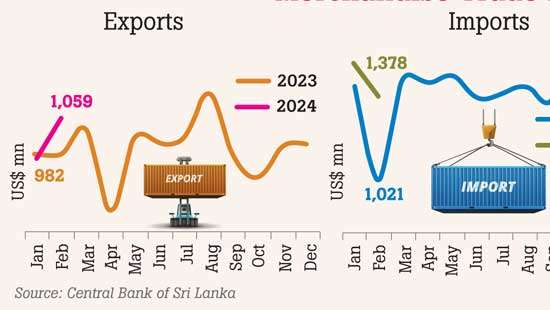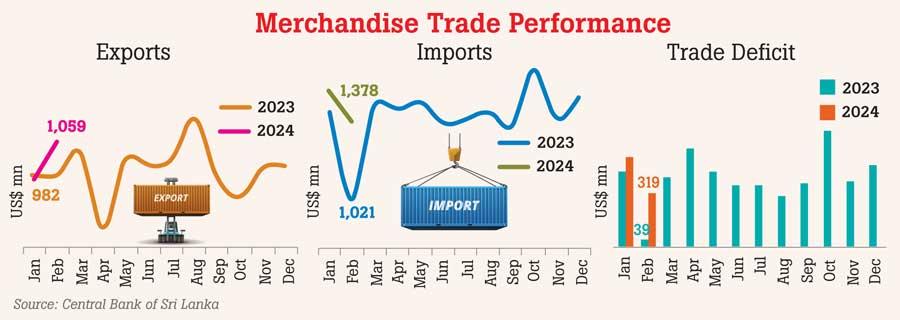Reply To:
Name - Reply Comment


- Both imports & exports up in a sign of synchronised reinvigoration across all sectors
The deficit in the trade account of the Balance of Payment (BoP) widened in February from a year ago on higher imports as the economy normalises. But it narrowed from a month earlier levels significantly due to less spending on fuel imports as the demand had been lower than expected.
Sri Lanka imported goods worth US$ 1,378 million and exported goods valued US$ 1,059 million to record a negative trade balance of US$ 319 million for February, nearly ten times the level of US$ 39 million a year ago as the economy was under pressure due to limited foreign exchange at the time.
However, on a month-on-month basis, the deficit was much lower than the US$ 541 million recorded in January as exports strengthened while imports fell due to aforementioned reasons.
On a year-on-year basis, merchandise imports rose by 35.0 percent while exports increased by 7.9 percent, reflecting largely normalising economic conditions with widely relaxed import restrictions and loose monetary policy.
The export strength came from all three major categories of industrial, agriculture and mineral wherein the former had been driven largely by petroleum products due to the increase in the volumes of bunkering and aviation fuel exports, the statement from the Central Bank said.
The agricultural sector exports were led by strong tea earnings from both higher volumes and prices.
Meanwhile in a sign of better times for the garments and textiles industry, their earnings have risen in February from January levels.
The merchandise imports have also been driven by all three categories of consumer, intermediate and investment goods.
Consumer goods, which first began to rise in a normalising economy, saw spending on both food and beverage imports and non-food consumer goods increasing.
Fuel imports were sharply down in the month to US$ 290.5 million from US$ 417.5 million in January.
The investment goods imports were driven by machinery and equipment - mainly the cranes and building materials such as iron and steel.
The type of the equipment brought down in February depicts the revival seen in the construction sector activity which the construction PMI showed through two back-to-back months of expansion through February.
On a cumulative basis, Sri Lanka has imported goods worth US$ 2,890 million and exported goods valued at US$ 2,030 million in the first two months, resulting in a negative trade balance of US$ 860 million, up sharply from the US$ 484 million in the corresponding period in 2023.